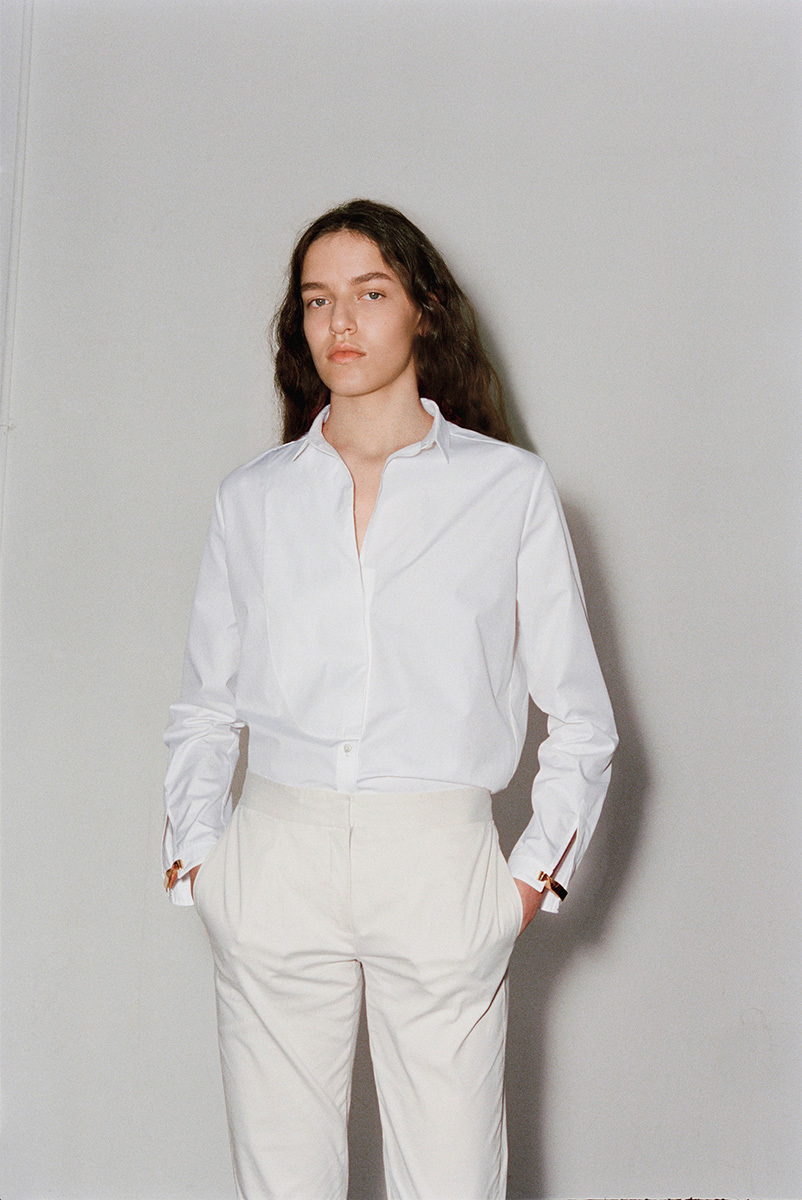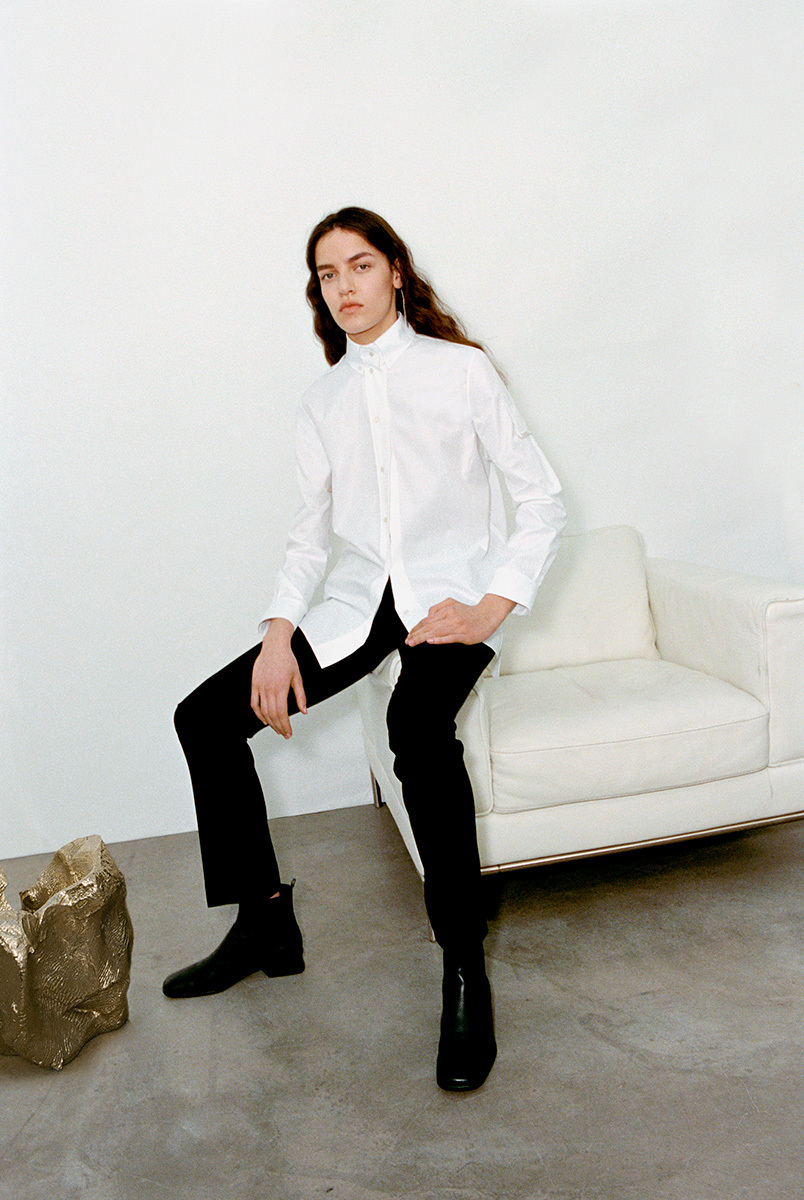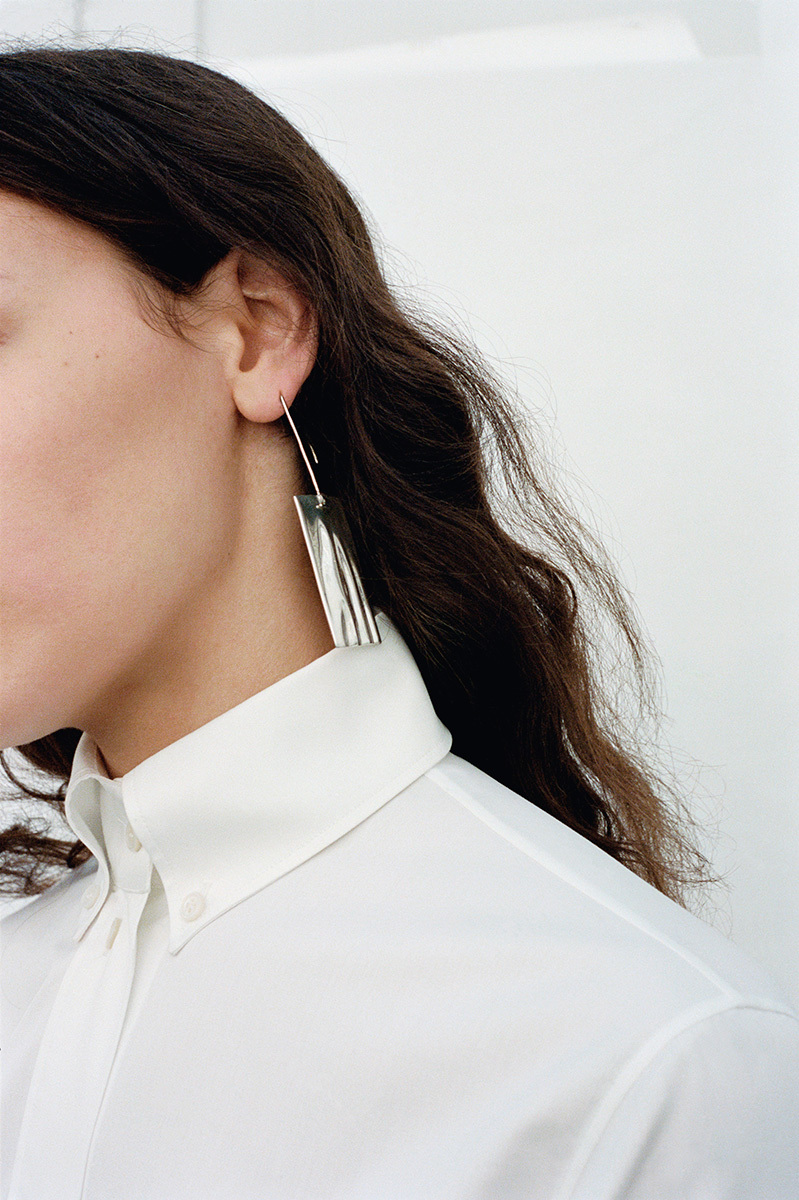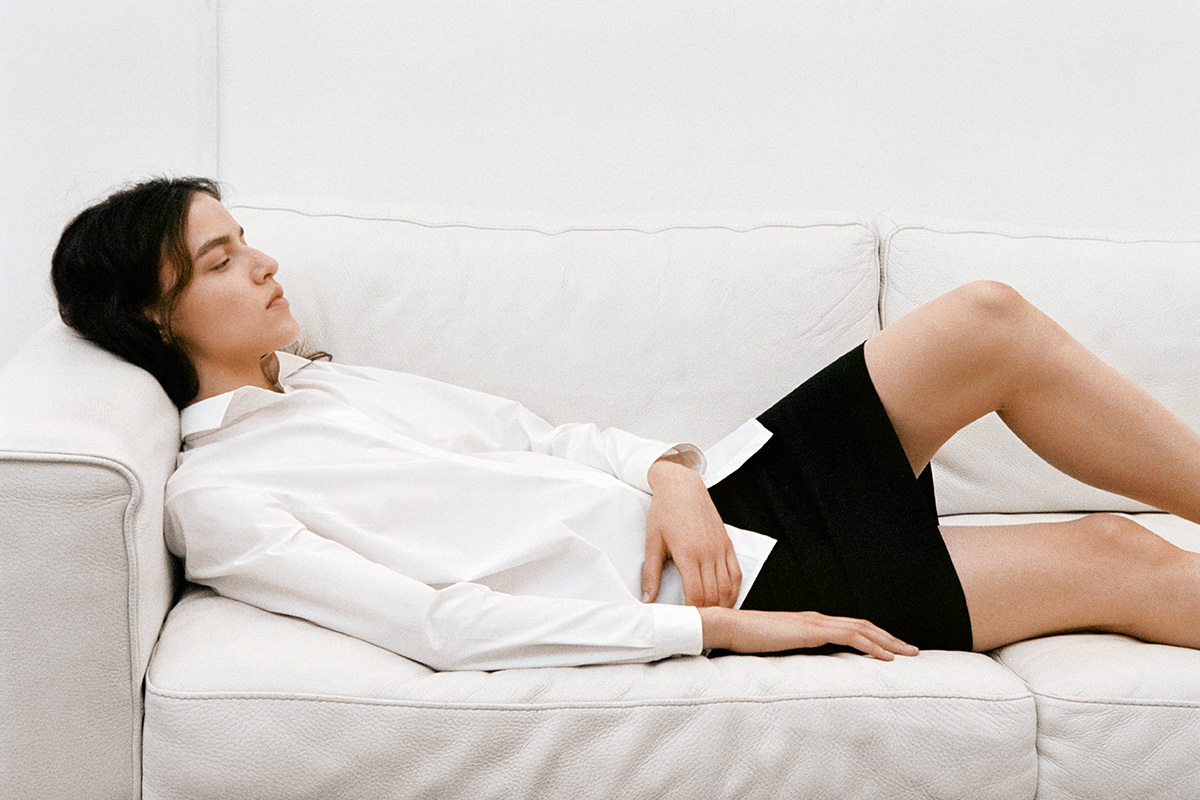Christel Bibi Blangsted pulls out two different samples of white fabric from a folder, and holds them up in the sunlight. “Which feels better?” she asks, urging us to touch them and sense the very slight differences. To distinguish the two almost identical brushed cotton samples requires an expert touch and knowledge of fabric which many don’t have.
Today she is putting the final touches to special boxes that contain the jewellery pieces that come with the luxurious white shirts she designs. Christel began with a desire to offer products that’ll last ages and don’t necessarily participate in the fashion industry’s fired-up seasonal cycle of collections. In the end, does one not simply desire to have few pieces of great value that become close to you, like a second skin? One way to create such an object, in Christel’s point of view, is by having jewellery interact with fabric. She puts down the cotton to explain.

You want to merge shirts with jewellery in order to create something more ‘valuable’, in terms of the attachment people have to it. Why?
Working with jewellery was not just in order to create emotional value, but for a large part meant to highlight the beauty of simplicity, or form. It is true though, that I believe jewellery has another form of value to add which a garment on its own often does not have. My thoughts on this follow along the line of the attachment one has to a favourite necklace, for example. It becomes you. You live in it, and you identify with it. Is it Fashion? Perhaps not, but is it design? The answer to me is yes.
So in a way, you approach fashion with a different timescale in mind.
I think it comes down to a personal need. If it’s something I have put a lot of time into, it should be good to last for a very long time, too. It has to feel good, and when you have something that feels good, you want it to last. This confidence somehow reduces the pressure of time. Right now, I just want to build a strong foundation. The next step is taking the collection to level two, and I’m really looking forward to that. Rome wasn’t built in a day, which is probably why it still stands today.
What you are doing seems to comment on the culture of abundance and disposability, quick turnaround, low quality. Many luxury brands follow this speed structure, and while your brand may be positioned outside this dominant discourse, it does follow the principles and language of the luxury market. What are your thoughts on being inside and outside ‘the system’ at the same time?
I guess I just try to stand by my values. Which is much easier for me as I am deciding my own rules. I think I try to be truthful, real and relevant. I don’t consider myself to be ‘outside’, other than that I stand quite firmly in my beliefs. I don’t feel a need to play by the rules, but I follow them where it makes sense too. My product is perhaps not designed and made in a way that other brands would, so it allows me to take a step beside the busy path.

Having worked in the industry for quite a while, and having seen such vast amounts of shirts — what sort of elements are total no-go’s for you?
It’s a big world and diversity is not a bad thing. But yes, one can feel quite fatigued of ruffles here and there and everywhere. Generally speaking I just don’t like design to be non-considered. So anything which seems like a quick fix to tick stereotype boxes, is not my favourite. I like design to be relevant, simple and direct.
Making shirts seems very direct and relevant as nearly everyone could relate to it, in one way or another. Ann Demeulemeester was fond of saying that for her, making fashion is a communication, like somebody else who writes a book. What’s your stance on this?
Yes, well making a collection is telling a story, I agree. But I think what I am doing is perhaps telling chapters. The collections are part of the same book, but I don’t know the story yet. Which in a way I think other brands are doing too, each in its own genre.
What makes a design a ‘good’ design in your eyes?
Balance, contrast, strength and grace, whether literal or in its own language. It is the translation from the origin or origins which creates the design.

I know you reject objects that don’t appear to have any significance in terms of wider culture. Is this related to your own design preference that rejects unnecessary elements, which don’t add any value?
I do believe a lot in relevance. I think fashion in itself is a reaction, so if it is not a reaction to our current time but rather that of the past or far future, I am not sure I can see the point, and it easily slips into the world of costumes. The designers that I tend to admire the most are all incredibly skilled at reading the culture around them, and project this into their collections.
So we are in a time now where it’s desirable to have a high quality product that lasts, as the world around us moves so quickly and in rather absurd ways… You’ve mentioned that you want to reintroduce specific jewellery pieces again in five years?
Yes, that’s correct. I wish my favourite pant and jumper could just be produced for eternity, and the idea of the jewellery to be resurfacing, is to repeat with limited editions something you love. I hope to do this.
What’s authenticity to you?
Same as for everyone else I think — to have some truthfulness to your origin.
And in terms of Bibi Blangsted?
Just to let a shirt be a shirt, but a precious one.

Credits
Text Mary Sower
Photography Chris Rhodes
Photography assistance Céline Bodin, Victor Paré Rakosnik
Styling Nobuko Tannawa
Hair Eiji Sato
Make-up Machiko Yano
Model Lauren Case @ IMG
Created with 1 Granary
